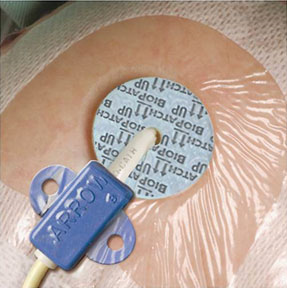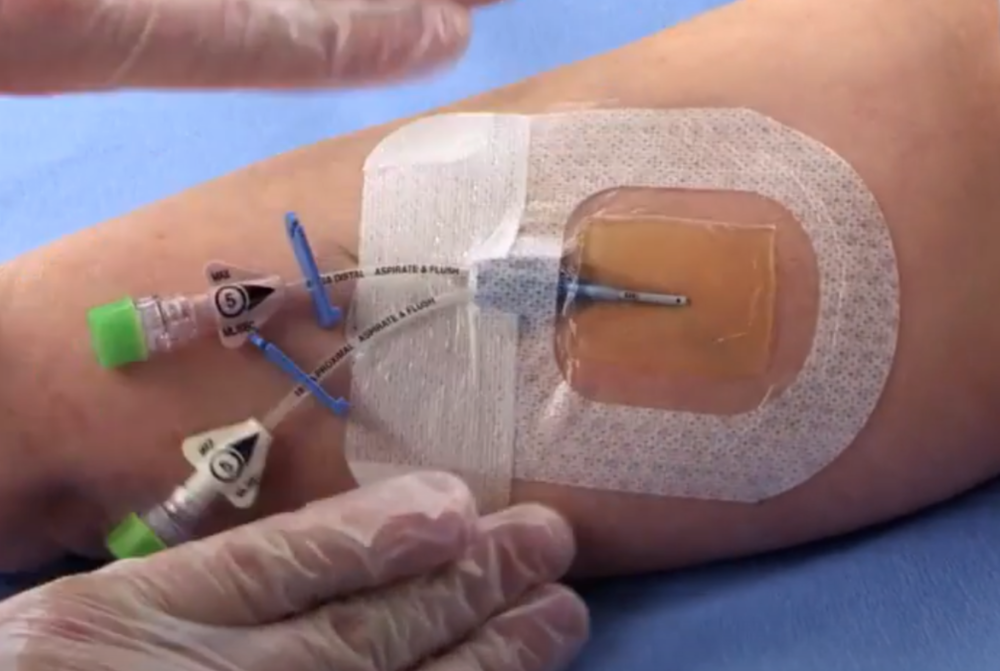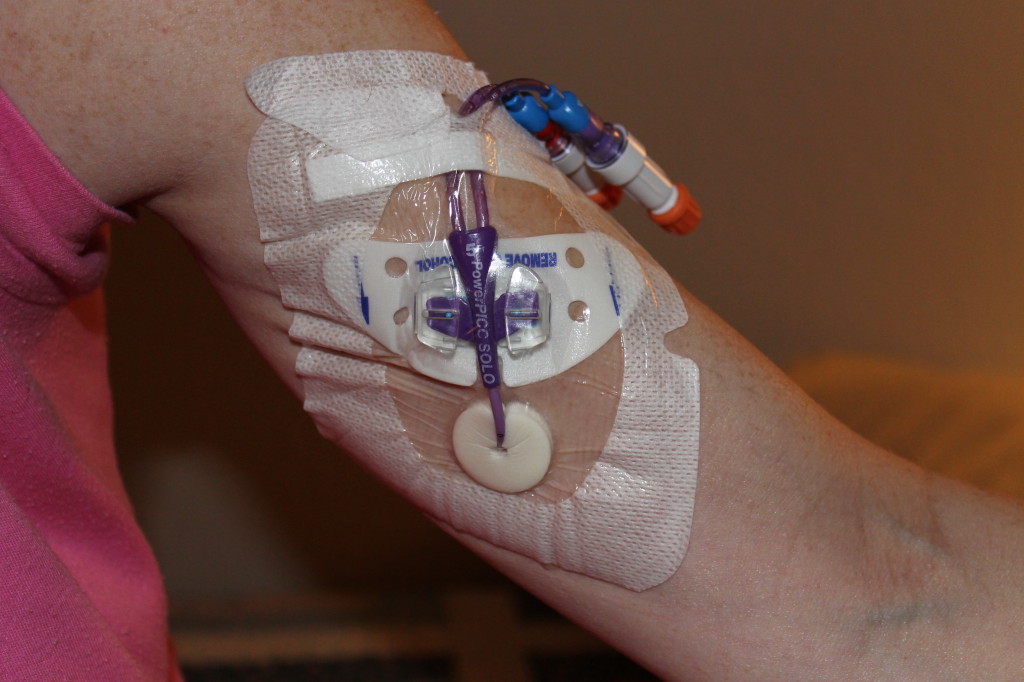central line dressing change how often
Remove all jewelry from your fingers before washing. Put on the mask.

Dressing A Central Line Properly Maimonides Emergency Medicine Residency
Wet your hands with clean water.

. Wash your hands for 30 seconds with soap and water. If there is a contraindication to chlorhexidine tincture of iodine an iodophor or 70 alcohol can be used as alternatives 82 83. If you have a gauze dressing change it every 2 days.
Be sure to wash between your fingers and under your nails. Aseptic technique for accessing and changing needleless connector 4. If the dressing becomes loose dirty or wet change it right away.
One trial randomised 995 people receiving central venous catheters to a longer or shorter interval between dressing changes and measured CRBSI. Flush the line gently see flushing section below. Central venous access devices CVADs are used for administering intravenous medications and blood sampling.
There has been a benefit demonstrated by 48 hourly dressing changes with the use of chlorhexidine washes at every. The central line provides a direct path into your bloodstream. Central Line Maintenance Bundle 1.
Wash your hands again. The central line provides a direct path into your bloodstream. Proper Dressing Change 3.
Daily review of catheter necessity. Attach the new clear cap and normal saline or heparin flush syringe to the line and unclamp line. The dressing changes allow a more detailed site inspection and cleansing of the skinsite.
According to the most recent CDC Guidelines 1 gauze dressings should be changed. Clean the end of the line with an alcohol wipe for 5 seconds and throw it away. If you have a gauze dressing change it every 2 days.
The end of this catheter goes into a large vein near your heart. Central venous catheters are used very frequently in intensive care units. If you have a transparent bandage dressing change it every 7 days or more often if instructed.
Peripherally inserted central catheter - dressing change. If the dressing becomes loose dirty or wet change it right away. Prepare clean skin with a 05 chlorhexidine preparation with alcohol before central venous catheter and peripheral arterial catheter insertion and during dressing changes.
People admitted to intensive care units and those with chronic health care problems often require long-term vascular access. Report this to your healthcare provider as soon as possible. This includes gauze under a transparent dressing.
The care of a central line includes routine inspection and dressing changes. Preventing infection while changing the dressing. If you have a gauze dressing change it every 2 days.
Preventing infection while changing the dressing. If you have a transparent bandage dressing change it every 7 days or more often if instructed. If this is not possible place a mask on the patient.
Open your central line dressing change packet. Dressing changes for central lines should occur every 5 to 7 days with a transparent dressing or every two days with a gauze dressing. How often do you change central line dressing.
To wash your hands with soap and water. Do not disturb or change a clean dry intact dressing until the due date. Report this to your healthcare provider as soon as possible.
Dry with a clean paper towel. Never touch the central line or dressing without first using one of these methods. A peripherally inserted central catheter PICC is a long thin tube that goes into your body through a vein in your upper arm.
Dressing change by wearing a mask or turning your head away. Dressing change packetyour mask is at the top or bottom Supplies. 9 However if the dressing has a break in the seal or.
Patients who get a CLABSI have a fever and might also have red skin and soreness around the central line. In addition to inserting the central line properly healthcare providers must use stringent infection control practices each time they check the line or change the dressing. CVC Dressing Change Continued Document date and time on dressing.
It is unclear whether there is a difference in the risk of CRBSI between people having long or short intervals between dressing changes RR 142 95 confidence interval CI 040 to 498 low quality. Changing Your Dressings. At home you will need to change the dressing that protects the catheter site.
Never touch the central line or dressing without first using one of these methods. If you have a gauze dressing change it every 2 days. Standardize tubing change 5.
You will change your dressings in a sterile very clean way. To wash your hands with soap and water. Wet your hands with clean water.
CVADs are covered with a dressing and secured with an adhesive or adhesive tape to protect them from infection and. The mask is often at the bottom or top of the kit. This includes gauze under a transparent dressing.
Checklist for Prevention of Central Line Associate Blood Stream Infections. How often these changes are done is a matter of contention.

112 Central Venous Access Devices Eviq

5 Key Points Of Effective Biopatch Use Department Of Anesthesiology

Dressing A Central Line Properly Maimonides Emergency Medicine Residency

Picc Dressing Change Peripherally Inserted Central Catheter For Nurses Youtube

Dressing A Central Line Properly Maimonides Emergency Medicine Residency

Central Line Resources Dressing Change Youtube Central Line Nursing Videos Nursing Notes

Central Line Dressing Change Nursing Skills Youtube

What Is A Picc Line Infusion Solutions Inc

Central Line Dressing Change Kit With Chloraprep Central Line Changing Kit Medical Supplies

Picc Dressing Change Peripherally Inserted Central Catheter For Nurses Youtube

Dressing A Central Line Properly Maimonides Emergency Medicine Residency